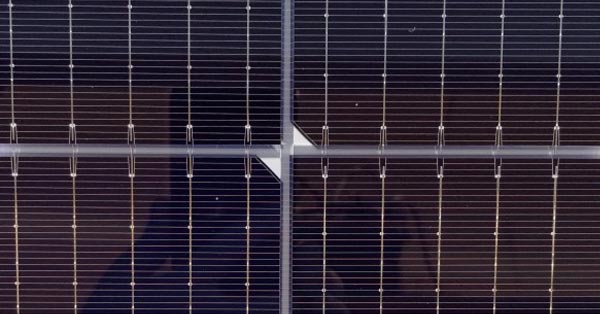Finland-based optical solutions company ICS Intelligent Control Systems Ltd has announced a power improvement of approximately 3.8% in heterojunction (HJT) solar panels when combined with the patented Solar Energy Optics (SEO) light redirecting film during a test. Fraunhofer Institute for Solar Energy Systems (Fraunhofer ISE).
The emerging HJT solar cell technology can achieve higher efficiency than traditional c-Si cells and even cells processed with PERC techniques. But the problem with power loss in the edge area of HJT cells has long been an obstacle to unlocking the optimal efficiency of these cells. By applying the ICS SEO film to the inside of the front glass of the HJT module, light is directed from the less efficient edges to the more efficient parts of the cells.
During the test at Fraunhofer ISE, four M6 half-cut HJT solar cells with 1.7 mm cell gaps and 2 mm string gaps were assembled into modules with two different SEO film configurations, overlapping the cell edges by 0.5 mm and 1 mm, respectively. The solar cells in the test were used in their original state, without additional customization or sorting.

The results showed a significant improvement in both maximum power and fill factor. An absolute increase in module efficiency of 0.66% to 0.75% was achieved, corresponding to a relative improvement of 3.3% and 3.8%.
The improved performance is the result of the combination of increased solar cell efficiency by minimizing edge recombination losses and improved use of light from inactive module areas.


According to ICS, detailed optical simulation models of the solar panels and the SEO film have been constructed and validated with experimental data. The results show that applying SEO film to a 120 or 144 cell module, with 2mm cell gaps and a white backplate, can deliver an efficiency improvement of 2.6% relative improvement, or two power classes. As an improvement over transparent bifacial modules or as an alternative to the gapless solution currently employed by some module manufacturers, efficiency gains can exceed 3.5%.
“These new results show that overlapping the edges of heterojunction solar cells with SEO film has the potential to be a game changer for high-efficiency PV modules,” said Dr. Andrea Pfreundt, product manager at ICS.
“We offer a feasible solution with additional Wp costs that are well below regular module costs for both residential and utility formats,” says Kari Rinko, CTO of ICS.


